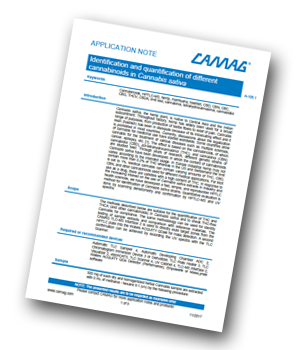CAMAG has produced an application note describing the different possibilities for Cannabis testing by HPTLC.

Cannabis sativa, the hemp plant, is one of the oldest crops of mankind and an important resource for the production of textile fibres, food products and medical drugs. Cannabinoids are the substances of medical interest in Cannabis, such as the analgesic cannabidiol (CBD). The cannabinoid tetrahydrocannabinol (THC) however has an intoxicating effect, for which Cannabis is used as a narcotic drug. In the USA and Switzerland, industrial hemp may not contain more than 1% of THC. In Europe, the limit is set to 0.2%. Based on the different intended usage, numerous genetic strains of Cannabis sativa have been developed, in which the content of cannabinoids varies greatly. This leads to different analytical tasks.
HPTLC is a simple solution for the analysis of Cannabis, especially in regards to different analytical goals. Particularly for a rapid THC limit test HPTLC is well suited. Detection and a precise assay of individual cannabinoids is also possible. This application note describes the different possibilities for Cannabis testing by HPTLC.
[1] Ceniviva E., Broszat M.: Quantification of tetrahydrocannabinol in Cannabis sativa. CAMAG Bibliography Service CBS 119, 2017, 14-15.
